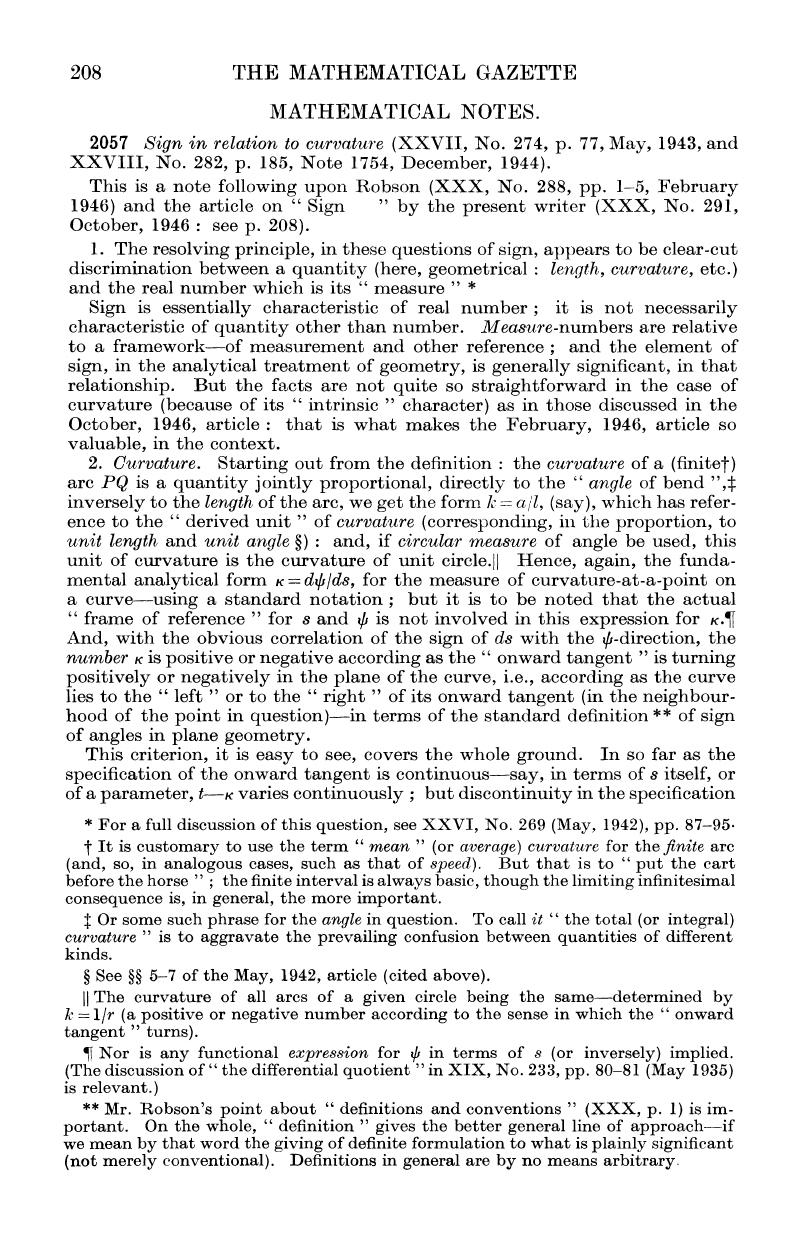No CrossRef data available.
Article contents
2057 Sign in relation to curvature (XXVII, No. 274, p. 77, May, 1943, and XXVIII, No. 282, p. 185, Note 1754, December, 1944)
Published online by Cambridge University Press: 03 November 2016
Abstract

- Type
- Mathematical Notes
- Information
- Copyright
- Copyright © The Mathematical Association 1949
References
page 208 of note * For a full discussion of this question, see XXVI, No. 269 (May, 1942), pp. 87–95.
page 208 of note † It is customary to use the term “mean” (or average) curvature for the finite arc (and, so, in analogous cases, such as that of speed). But that is to “put the cart before the horse” ; the finite interval is always basic, though the limiting infinitesimal consequence is, in general, the more important.
page 208 of note ‡ Or some such phrase for the angle in question. To call it “the total (or integral) curvature” is to aggravate the prevailing confusion between quantities of different kinds.
page 208 of note § See §§ 5–7 of the May, 1942, article (cited above).
page 208 of note ‖ The curvature of all arcs of a given circle being the same—determined by k = 1/r (a positive or negative number according to the sense in which the “onward tangent” turns).
page 208 of note ¶ Nor is any functional expression for Ψ in terms of s (or inversely) implied. (The discussion of “the differential quotient” in XIX, No. 233, pp. 80–81 (May 1935 is relevant.)
page 208 of note ** Mr. Robson’s point about “definitions and conventions” (XXX, p. 1) is important. On the whole, “definition” gives the better general line of approach— if we mean by that word the giving of definite formulation to what is plainly significant (not merely conventional). Definitions in general are by no means arbitrary.
page 209 of note * This differential relation—unlike that between the parent variables—is unambiguous.
page 209 of note † This, surely, is the right way to define these terms (see 5, below).
page 209 of note ‡ As in XIX, No. 233, p. 82. Here, again, no functional expressions for the relations between the variables need be implied.
page 210 of note * This “pure geometry” is quite subordinate in the mathematical argument ; and questions of rigour in proof—and of the exceptional cases—are beside the point. The onus of proof is on the analytical discussion.
The figure has again been drawn for me by Mr. J. M. Allen (see XXX, pp. 204–5). On this type of “ simplest figure which exhibits all the essential facts ”, there is a relevant short note, written a quarter of a century ago (XI, No. 161, pp. 188–9) on “ geometrical generality “, which holds good.
page 210 of note † E.g. Joseph Edwards and Horace Lamb. There has been some considerable loss in the swing of the pendulum, from intuition to rigour ; and a tendency to sacrifice naturalness of approach—which sacrifice, in fact, is hardly ever necessary to rigorous treatment. Both can generally be conserved.




